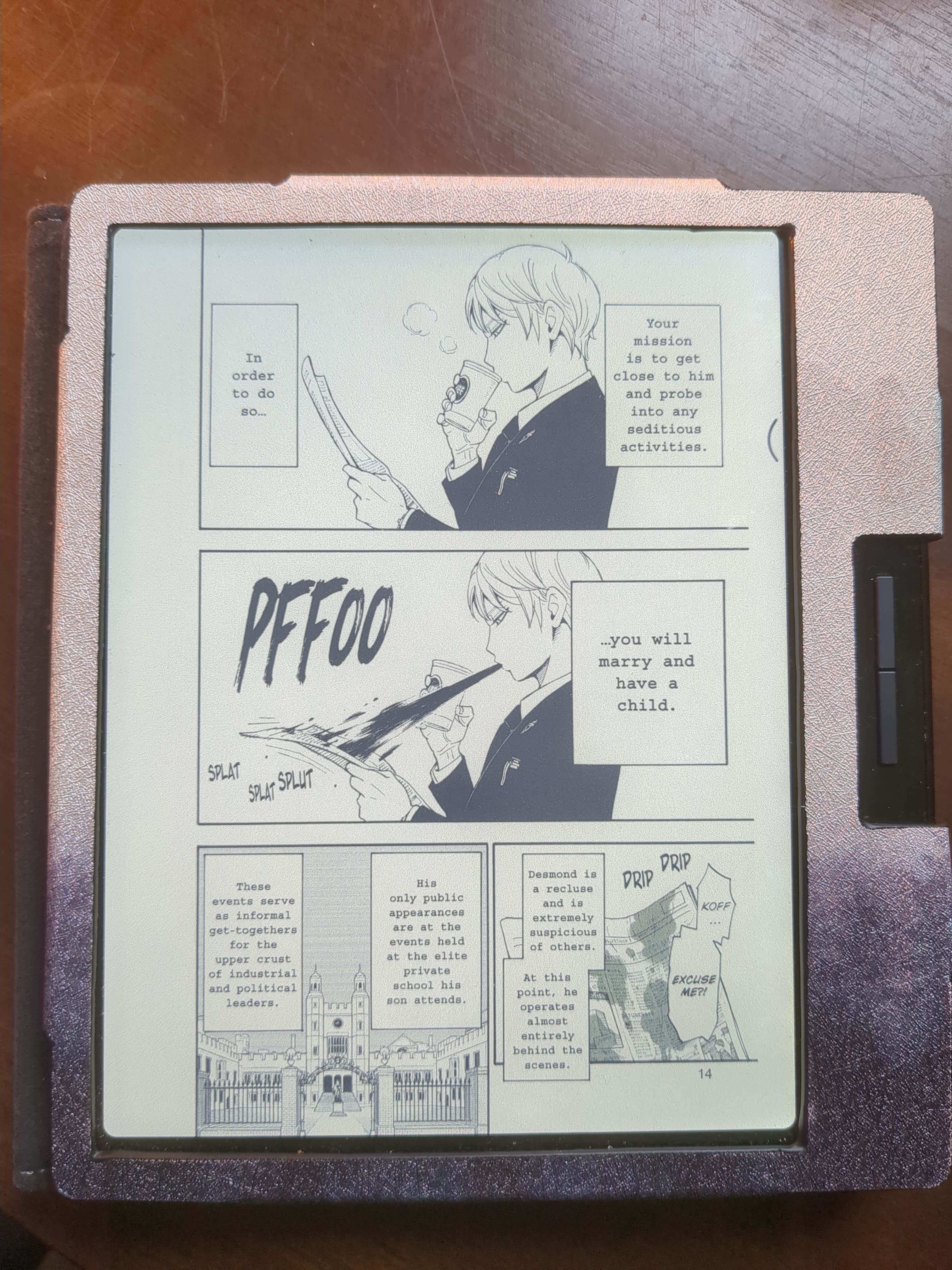I’ve begun wanting to reduce my usage of smartphones and tablets.
Being of an age that remembers the large-scale transition to cell phones, laptops, and high-speed internet, I’ve seen how most of us have become accustomed to and dependent on these technologies. My toddler often sees me reading blog articles on my cell phone over morning coffee, and tries to steal the magical pocket device that his dad so clearly loves. I really don’t like that, and I don’t want to model this to my children over the long term.
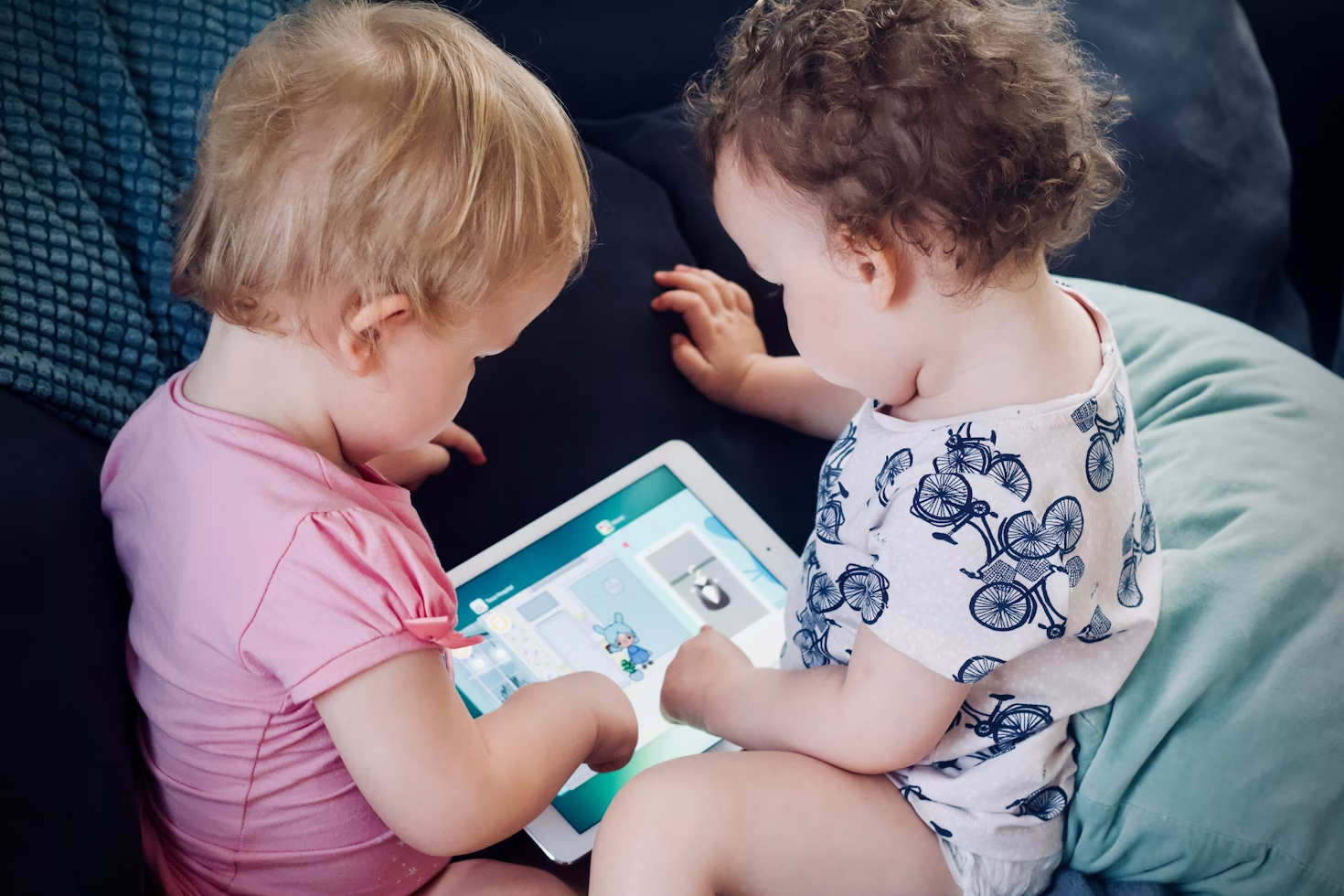
But how to reconcile this with the fact that most of my reading and “radio” (podcast) shows are accessed through digital devices?
Perhaps the answer is to adopt technology with sharper boundaries. Find a sweet spot between convenience and degradation of habits.
Some of the readers will remember life with landline phones:
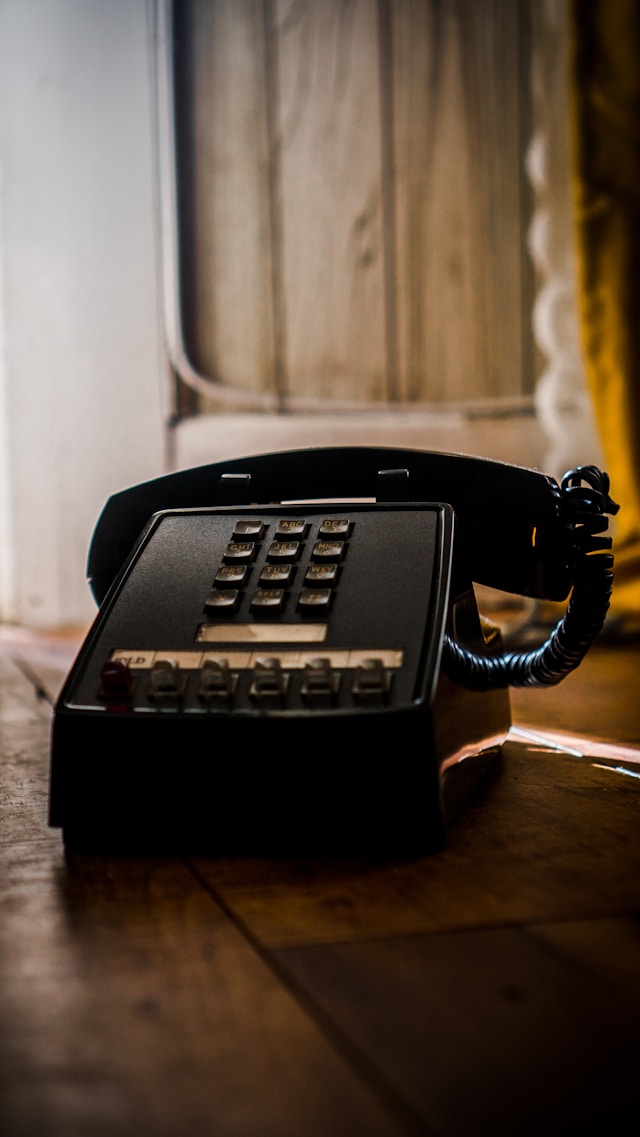
Maybe it’s the nostalgia of youth speaking, but living with the limitations of landline phones, desktop computers, and primitive social media often seemed better. Classrooms and meetings weren’t disrupted by cell phones or whatever someone would bring up onto their laptop or tablet’s screen. People were often forced to stick to their plans, rather than the frequent on-the-fly schedule adjustments we so often see today. Young men weren’t made to compete against dozens or hundreds of other guys in a woman’s pocket. Friends and acquaintances had to speak to each other at bars and coffee shops, or at least get their entertainment from the environment around them.
So, I’d like to recapture some of that spirit, without shutting myself and my family off from the more valuable knowledge provided by the ecosystems on digital devices.
Given their limitations, e-ink devices look like a promising technology to accomplish such a goal. They are very ill-suited to watching videos and playing most games. Entering text and browsing are also fairly poor experiences. What they excel at is the consumption of longer-form content. Exactly what I want to model for my children, and to encourage as a habit for myself.
Over fifteen years ago, my father gave my brother and I a pair of second generation Kindles for Christmas, the first model available outside of the United States. It had a tiny keyboard, physical page turn buttons, and even a little square nub mouse. Compared to the models available today, it lacked a front light, had fairly low-resolution text, pretty poor contrast, and low memory capacity.
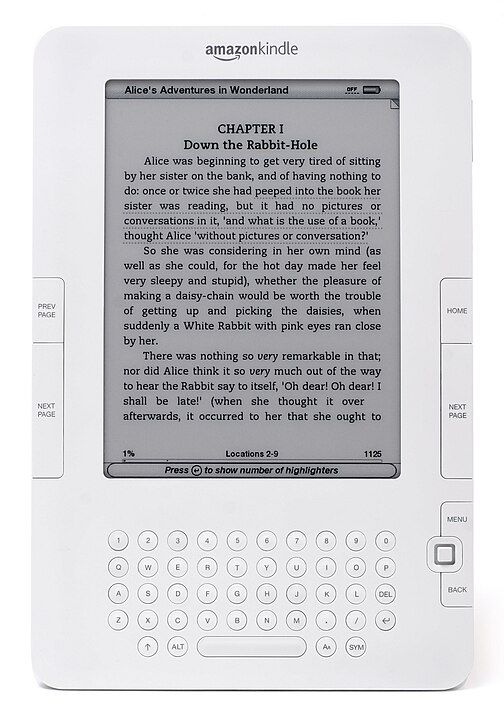
Still, I loved the thing for a while, taking it to Spain in the summer of 2012 and ploughing through at least a dozen novels on it using a cheap, clipped-on reading lamp.
Over the years, I’ve acquired a few hundred Kindle Store books, even reading a decent fraction of them. Amazon sells all kinds of e-books that are often either physically unavailable, or are simply too expensive in their physical editions. And there is no shipping charge, a big bonus for someone in Canada looking to tap into the much larger American book market.
However, I’m now experienced enough to see that these walled gardens can come to trap people, over time. While Amazon has been pretty good about avoiding censorship, certainly in comparison to other software companies and content providers, there is no guarantee that such a relatively liberal attitude will endure. In fact, as I was writing this article, Amazon announced the removal of its “Download & Transfer via USB” feature. Whether this is a conscious attempt to discourage jumping out of their ecosystem and e-readers, an anti-piracy initiative, or something else, it reinforces the point that it’s better to strive for flexibility and open standards, even at the cost of some convenience.
In recent years, several Chinese companies have developed their own e-readers running customized versions of Android, with Boox and Bigme being two prominent examples. Several models have SD card readers that can accept up to 2TB in storage, external speakers, and Bluetooth connectivity. I have found an excellent review channel for many of these Chinese e-readers. Chalid Raqami, the channel’s creator, is probably the most thorough and engaging reviewer if you’re looking for an accessible starting point to find out more about the now sizeable diversity of e-ink devices.
Seeing this, I began to think that perhaps these could end up being the “sweet spot” digital devices. E-books easily downloaded from multiple sources, blog articles and podcasts delivered via RSS feed, library e-books borrowed, and even a full music library, if desired. I could also indulge my guilty pleasure of Mass Effect fan fiction. On a larger screen, this would be a sweet graphic novel reader. All of this without the distraction of a fluidly browsable internet. Without videos. Without the sleep disturbance brought by a flickering LCD screen, blasting its backlight into my retinas.
My wife is also a voracious reader, looking to maintain access to library e-book borrowing, while also being able to play podcasts. Since she had a twelve- or thirteen-year-old Kobo device, it made sense for her to be the first in the family to convert over to a more open e-ink tablet.
Knowing all of that, I eventually settled on getting the Boox Go Color 7 as a combined Christmas and birthday gift for my wife. This is a 7” color e-ink tablet running a customized, yet fully functional version of Android 12. I spent a good few days setting up and altering app-specific e-ink display behavior on this e-reader, and got to spend a few weeks with it before handing it off to her permanently.
Based on several weeks of tinkering and two months of near-daily usage by my wife, here are our observations:
• Neoreader, the built-in default reading application, is quite good and very versatile in file handling. It displays standard ePub files well, has a fairly intuitive interface, and possesses a number of settings. If you’re looking first and foremost to read your own ePub and other text files on this device, it’s more than up to the task.
• The Kindle Android app was also pretty intuitive to use, with little feeling in divergence from reading on a Kindle proper. The Kobo application was a bit rougher around the edges in its behavior on the e-ink screen, but still works perfectly fine once you adapt to its quirks.
• Manga looks pretty good on this tablet. My six-inch Kindle Paperwhite is just a bit too small to show finer details and text. But the Boox Go’s seven-inch screen handles it like a champ.
• It is possible to use Neoreader to handle larger format Western comic books with some adjustments, but I personally didn’t enjoy having to split each page into two or four sections in order to read the text. For someone interested in reading lots of Western comic books on an e-ink device, I’d spring for a ten-inch screen, such as seen on the Note Air 4C or the Go 10.3.
• The Kaleido 3 screen, an RGB filter layer over black-and-white Carta e-ink, definitely dims the screen, in comparison to a black-and-white e-reader. Some people can’t get over this, but both myself and my wife found that turning up the front light to a higher setting greatly mitigates this downside. Be warned that if you are someone who doesn’t like using the front light on their e-reader, you should avoid Kaleido 3 screens and stick with a black-and-white e-reader, since the screen is nearly unreadable without the use of the frontlight.
• The color filter also introduces a slight grainy texture to the screen when looking at it closely. This is sometimes called the “screen door effect.” Again, a minority of people can be quite sensitive to these kinds of things, but both of us at home don’t notice this filter most of the time. It does tend to be more evident in photographs than in day-to-day usage, and you become accustomed to the slight texture of the screen.
• Library e-book borrowing and reading with the Libby application has been a great experience, according to my wife. Functionality no worse than on her iPhone, but with greater reading comfort and fewer on-device distractions.
• Ghosting will be a problem with comics, manga, and other image-heavy content unless you take the time to familiarize yourself with the application-specific e-ink settings. The customized Android operating system on Boox devices allows users to alter refresh modes and animation speed settings for individual Android applications, but this is not immediately intuitive and has somewhat of a learning curve. Even then, certain animation-rich programs (e.g., audio players) are still going to have ghosting and sluggish controls. Most will still be usable, but don’t expect the user experience to be the same as on a device with an LCD or OLED touchscreen.
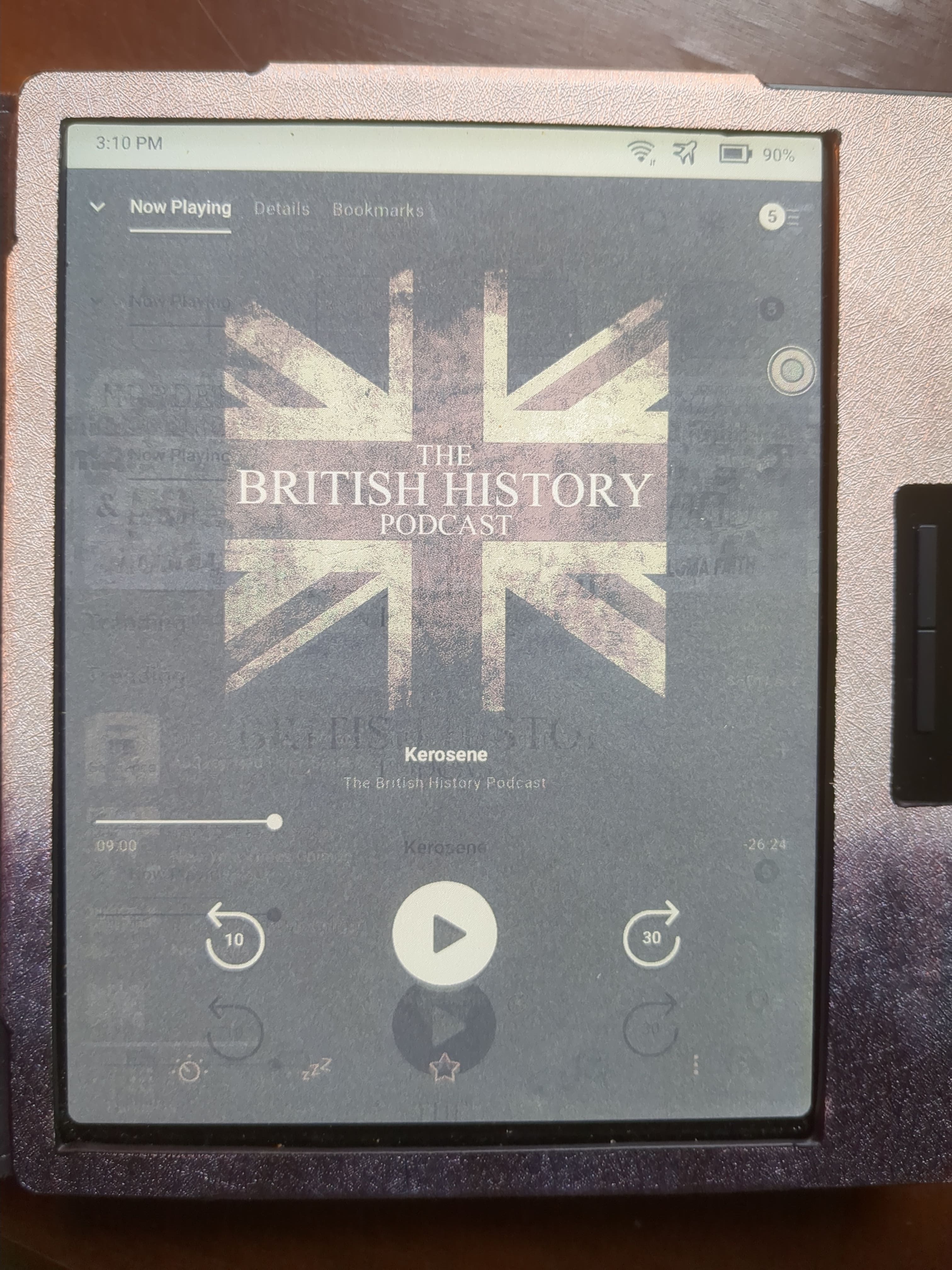
• It’s a competent podcast and music player, working pretty well when paired with a kickstand cover for speaker play, or with Bluetooth headphones. My wife will often queue up a few of her usual shows and place the tablet on top of the fridge, out of toddler reach, while making dinner.
• The Go Color 7 is a fairly good blog reader, when paired with an RSS feed reading application.
• Browsing the internet is possible, but isn’t a great experience. I personally find this to be a positive.
Overall, I’d say that the Boox Go Color 7 is a great all-arounder.
The biggest draw is the flexibility of the Android operating system, allowing for application installation via Google Play, alternative app stores such as the Aurora Store or F-Droid, direct downloads, or sideloading. This flexibility greatly expands the possible uses of the device, and others like it. The 2TB SD card reader means that storage won’t be a problem, for those wanting to use the Go Color 7 to host lots of manga, magazines, music, or podcasts.
Meanwhile, the Kaleido 3 color screen is a mixed blessing. The color layer certainly helps with Android app navigation, and is obviously very nice if viewing comics, magazines, or books containing color images. However, the extra layer does moderately reduce screen brightness, and the lightly textured screen appearance will bother some people. Given such considerations, certain individuals may prefer going with a black-and-white e-ink Android device.
As for myself, I plan to use my 2018 Kindle Paperwhite a bit longer, as it’s still a perfectly functional device. But given the experiences of my wife and myself, my next e-reader will definitely be on a more open operating system, something along the lines of the device reviewed above.

